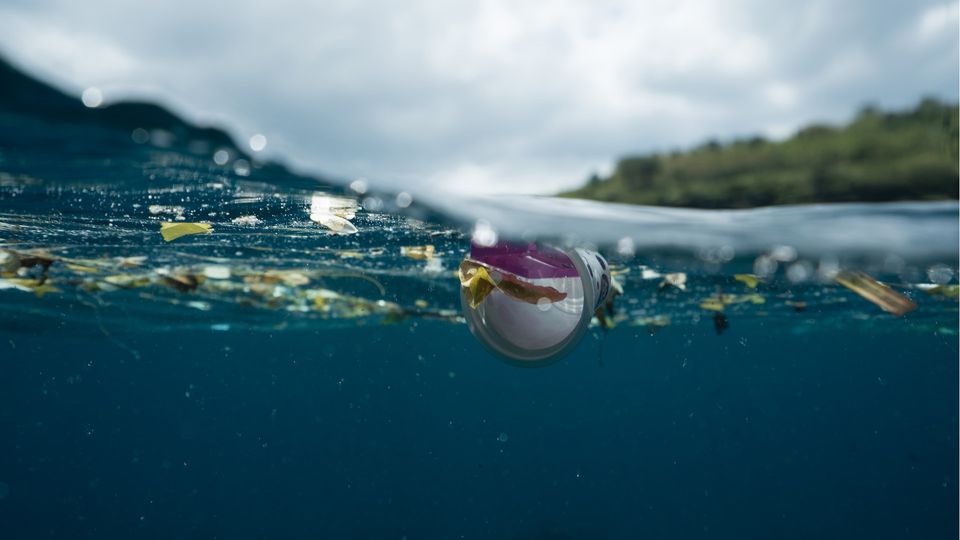Open-Access Database Created To Help Identify Plastic Pollution Sources

Complete the form below to unlock access to ALL audio articles.
Research led by the Monterey Bay Aquarium and MBARI (Monterey Bay Aquarium Research Institute) provides a new open-access Raman spectral library that can be used to detect molecular "fingerprints" of particles and better trace sources of ocean plastic pollution. Published in Scientific Data, the study offers a more extensive free resource for scientists to tap than previously available. It adds 42 polymer types not included in other open-access libraries and is the first to include polymers from non-plastic particles, such as seagrass, shells, and animal tissues, to prevent misidentification and improve accuracy of results.
The study constructs a library of polymer types to match current and newly discovered plastic pollutants. Aquarium researchers envision other scientists building and using open-access libraries with more and more polymer types to better understand and address the global plastic pollution crisis.
"Ocean plastic pollution is a global problem that will take an international community of scientists to help address. Scientists first need to identify microplastics to recommend how to prevent each pollution pathway,” said lead author Emily Miller, a Senior Research Fellow at Monterey Bay Aquarium, “Many researchers can't afford access to the plastic spectral libraries needed for identification and their critical work is blocked. We didn’t want to create a barrier for others, so our team intentionally made this spectral library available to all."
Identifying microplastic particles is not as straightforward as it sounds. Even with the use of a microscope, it can be difficult to distinguish between a plastic fiber and an organic fiber. Researchers in the study used Raman spectroscopy to identify small unknown materials. Using a laser pointed at sample material, the light scatters based on its chemical structure creating a unique molecular fingerprint. That fingerprint is then matched with those of known plastics in a library to identify the material.
Scientists then constructed the library, enabling the identification of over forty types of plastics. Most of the data focuses on nearshore Pacific Ocean systems and includes plastics associated with coastal agriculture and fisheries.
The library includes both new and weathered plastics, and non-target biological polymers commonly present in marine environments to avoid misidentification.
Overall, the study contributes 24 new plastic types, and 18 biological types that were not included in previous databases. Two of these newly contributed types of plastic were sourced from marine fishing gear.
A 2019 study, led by Monterey Bay Aquarium and MBARI, also used Raman spectroscopy to show microplastic pollution can be found in almost every marine habitat on Earth. Scientists estimate more than nine million tons of plastic make their way from land into the sea worldwide every year. To solve the global plastic pollution crisis, we must identify the types of plastic in the ocean and other environments. This will help determine where the plastic is coming from and how it has entered the environment.
With only nine percent of plastic recycled every year and plastic materials harming wildlife including sea turtles, marine mammals, and seabird species, this study can help prioritize efforts around the globe to prevent plastic pollution.
The open access library not only serves as an important database but can remove barriers to key information such as expensive paywalls so all scientists can work together towards understanding and working towards a solution to the global issue of plastic pollution.
This library will also aid researchers working to fill in knowledge gaps on microplastic sources that were pointed out by the 2021 National Academies of Sciences, Engineering, and Medicine report, “Reckoning with the US Role in Global Ocean Plastic Waste”.
“The Aquarium is committed to addressing the plastic pollution crisis to improve the health of our ocean and our planet,” said Aimee David, Vice President of US & California Ocean Conservation at the Monterey Bay Aquarium. “We need the best science to develop the best solutions and drive progress from the local to international level, including the creation of a new global plastic pollution treaty. By unlocking key information to identify the types of plastic in the ocean, scientists can use the new Raman spectral library to connect ocean pollution to its sources around the world.”
Reference: Miller EA, Yamahara KM, French C, Spingarn N, Birch JM, Van Houtan KS. A Raman spectral reference library of potential anthropogenic and biological ocean polymers. Sci Data. 2022;9(1):780. doi: 10.1038/s41597-022-01883-5
This article has been republished from the following materials. Note: material may have been edited for length and content. For further information, please contact the cited source.

